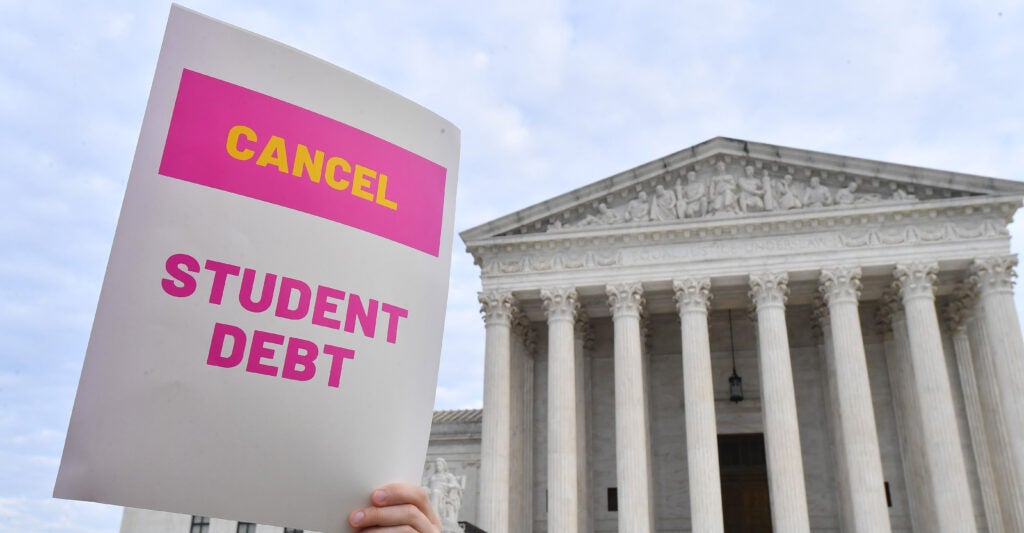Litigants preparing for oral arguments in the Supreme Court on Tuesday against the Biden administration’s student loan forgiveness plan anticipate victory, based on past high court decisions batting down the administration’s executive overreach.
“This really is reminiscent of what we saw with the [ Centers for Disease Control and Prevention] eviction program, the [Occupational Safety and Health Administration] vaccine mandate program, where the government really acted outside the authority of what it was given on a question of significant economic and political importance that really needed Congress to say this out loud, and the administration can’t do this behind closed doors,” Karen Harned, chief legal officer for Job Creators Network Foundation, told reporters Monday.
The Department of Education is relying on a post-9/11 law known as the HEROES Act of 2003 (an acronym for Health and Economic Recovery Omnibus Emergency Solutions Act) that grants the U.S. secretary of education the authority to allow military troops to delay their student debt obligations during national emergencies.
The Job Creators Network Foundation, the lead plaintiff, argues the law does not extend to the broader public. A loss here could mark a trifecta of losses for President Joe Biden regarding executive actions he has sought to justify by the pandemic.
The Supreme Court previously struck down the Biden administration’s COVID-19 vaccine mandate of private employers via OSHA.
Before that, the Supreme Court struck down the administration’s eviction moratorium that was administered through the CDC.
The Supreme Court will consider two questions in the oral arguments. This first is whether the plaintiffs have standing.
Next, the high court will consider arguments on whether the government illegally shut the public out of the rule-making process under both the Administrative Procedures Act, which governs how regulations are implemented, and the Higher Education Act, which governs the student loan program.
“The government did not go through either of these processes and illegally denied the plaintiffs, in our case—and really all Americans—the right to weigh in on who is in and who is out of this student loan forgiveness program,” Harned said.
Education Secretary Miguel Cardona defended the constitutionality of the loan forgiveness after the departments of Education and Justice jointly filed a brief in January with the high court.
“We remain confident in our legal authority to adopt this program that will ensure the financial harms caused by the pandemic don’t drive borrowers into delinquency and default,” Cardona said in a statement in January.
“We are unapologetically committed to helping borrowers recover from the pandemic and providing working families with the breathing room they need to prepare for student loan payments to resume,” the secretary continued. “As previously announced, student loan payments and interests will remain paused until the Supreme Court resolves the case because it would be deeply unfair to ask borrowers to pay debt they wouldn’t have to pay, were it not for meritless lawsuits.”
From a policy standpoint, the loan forgiveness program does nothing to address the root problem of skyrocketing college costs, said Elaine Parker, president of the Job Creators Network Foundation.
“Student loans are merely a symptom of a much deeper problem, out of control tuition that has grown by nearly twice the rate of inflation rate over the past two decades,” Parker told reporters on the call. “Biden’s loan forgiveness program will only worsen this problem by failing to hold colleges accountable and giving them a blank check to continue price gouging.”
Parker added, “Only by stopping this student loan bailout can we come together in bipartisan fashion to effectively reform the higher ed cartel and reverse runaway college costs burdening so many.”
Have an opinion about this article? To sound off, please email letters@DailySignal.com and we’ll consider publishing your edited remarks in our regular “We Hear You” feature. Remember to include the url or headline of the article plus your name and town and/or state.
